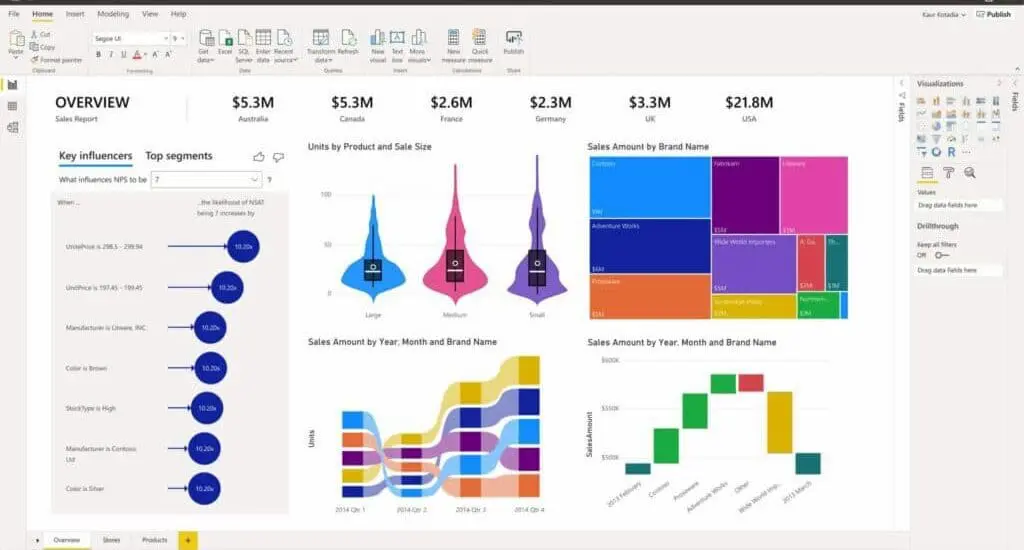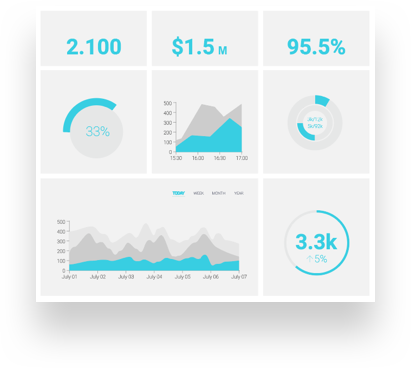Do you ever feel like you’re struggling to make the most of your business intelligence tools? Or is your data scattered across different systems, making it hard to gain actionable insights? In today’s data-driven business environment, these issues are common. Many organizations are dealing with overwhelming data sources, poor data quality, and a need for more skilled personnel to interpret the data effectively.
Business Intelligence (BI) is crucial in turning your data into valuable insights that drive strategic, profitable decisions. BI tools can combine different data sets, visualize trends, and offer real-time updates. However, these tools require the right expertise to fully harness their potential.
The BI Consultant is at the heart of this transformation. A professional dedicated to helping organizations make data-driven decisions through advanced analytics and interactive dashboards, BI Consultants bridge the gap between complex data and actionable business strategies, ensuring your organization leverages data effectively.
But what exactly does a BI Consultant do? Let’s dive into their key responsibilities and the impact they can have on your business.
What is a BI Consultant?
A BI consultant uses business intelligence technologies to collect, analyze, and interpret data. Their main objective is to assist organizations in enhancing their business operations by offering valuable insights from various data sources. These insights empower companies (like yours) to make informed decisions.
By transforming complex data into actionable intelligence, BI Consultants empower businesses to optimize their processes, identify new opportunities, and mitigate risks. Their expertise ensures that companies can navigate the complexities of modern data landscapes and achieve sustainable growth.
Key Responsibilities of a BI Consultant
It is important to understand the key responsibilities of a BI Consultant in order to appreciate the value they bring to an organization. BI Consultants play a vital role in transforming data into strategic assets that drive business success. Here’s a breakdown of their primary responsibilities:
1. Data Analysis and Interpretation
BI Consultants collect and analyze vast amounts of data to identify trends and patterns. They help turn this data into actionable insights that can be used to improve various aspects of business operations.
2. Developing BI Solutions
BI Consultants design and implement BI tools and systems tailored to the specific needs of their clients. This includes customizing BI solutions to ensure they align with the client’s business goals and requirements.
3. Reporting and Visualization
Specializing in data visualization, dashboards, and reports is a core component of a BI Consultant. These visualizations help stakeholders understand complex data and make it easier to communicate findings across the organization.
4. Strategic Planning and Decision Support
BI Consultants assist clients in strategic planning by providing data-driven recommendations. They support decision-making processes by delivering insights that are critical for long-term business success.
5. Training and Support
Educating client staff on how to use BI tools and best practices is essential. BI Consultants offer ongoing support and maintenance to ensure the continued effectiveness of BI systems.
By implementing tailored BI solutions and providing continuous support, BI Consultants help companies maintain a competitive edge in today’s data-driven marketplace.
Impact of BI Consultants on Organizations
One thing that’s clear is that sound decision-making is key to long-term profitability and success. BI Consultants significantly enhance decision-making processes within organizations by providing valuable insights derived from comprehensive data analysis. For example, a company can use BI analysis to identify market trends and adjust its strategies accordingly, resulting in more informed and timely decisions. According to a study by Forrester, data-driven companies are 8.5 times more likely to be profitable year-over-year than those that rely on intuition. This level of informed decision-making allows businesses to anticipate market shifts and respond proactively, giving them a distinct advantage.
Moreover, BI solutions streamline operations and reduce costs by optimizing business processes. Automated reporting tools, for instance, can save significant time and resources that would otherwise be spent on manual data analysis. The McKinsey Global Institute reports that companies using data effectively can improve their productivity by up to 25%. This operational efficiency translates into reduced costs and improved bottom-line performance, enabling companies to allocate resources more effectively and focus on strategic initiatives.
Utilizing business intelligence (BI) for market analysis is crucial for businesses to stay ahead of the competition by uncovering new opportunities and addressing potential risks. BI Consultants provide the insights needed to stay ahead of competitors, turning data into a strategic asset. Additionally, BI Consultants foster a data-driven culture within organizations, encouraging employees at all levels to use data as a foundation for their actions. This cultural shift leads to more consistent and effective outcomes as data becomes central to decision-making processes.
One example of this impact is seen in our work with a Fortune 500 real estate investment management company. We developed customized BI solutions that enhanced data-driven decision-making, resulting in significant financial growth and improved operational efficiency. By transforming complex data into actionable intelligence, our BI Consultants empower businesses to optimize their processes, identify new opportunities, and mitigate risks. Our expertise ensures that companies can navigate the complexities of modern data landscapes and achieve sustainable growth.
Why Choose WCI Data Solutions for BI Consulting?
At WCI Data Solutions, we offer a wide range of business intelligence consulting services designed to meet the unique needs of each client. With a proven track record of success, we have helped numerous organizations achieve their business goals through data-driven decision-making. Our expertise in developing customized BI solutions, combined with our commitment to ongoing training and support, makes us the ideal partner for any organization looking to harness the power of business intelligence. By working with WCI, businesses can leverage tailored BI solutions that drive performance and growth, ensuring they stay competitive in today’s data-driven marketplace.
For more information on how our Business Intelligence Consulting services can benefit your organization, visit our Business Intelligence Consulting page.
FAQs
What can a BI Consultant do for my business?
BI Consultants help improve business operations by providing valuable insights from data analysis, designing customized BI solutions, and offering strategic decision support. At WCI, we enable businesses to make informed decisions, optimize processes, and uncover new opportunities through effective data management and analysis. Learn 3 Easy Ways to Maximize Data Management and Business Intelligence Success
How do BI Consultants help in strategic planning?
BI Consultants provide data-driven recommendations and insights that inform long-term business strategies and support decision-making processes. They analyze market trends, customer behavior, and internal performance metrics to help businesses identify opportunities, mitigate risks, and set actionable goals aligned with overall business objectives. This approach ensures that strategic planning is grounded in accurate data and comprehensive analysis, leading to more effective and sustainable growth. Request a Discover Meeting Today
What are the benefits of hiring a BI Consultant?
Hiring a BI Consultant brings several benefits, including improved decision-making, increased operational efficiency, competitive advantage, and fostering a data-driven culture within the organization. With their expertise, businesses can leverage data to drive performance, stay ahead of competitors, and make strategic decisions with confidence. This not only enhances productivity but also positions the company to respond proactively to market changes and opportunities. Read 5 Questions To Ask When Choosing a Business Intelligence Consulting Firm








